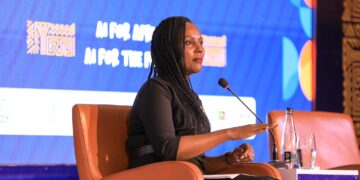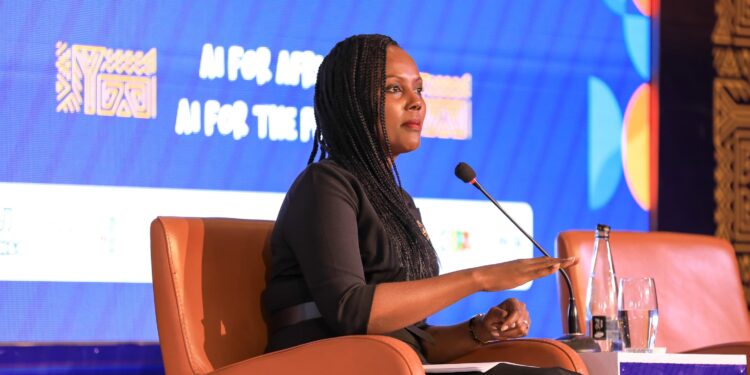“I still remember watching my mother, a teacher, come home with piles of exam scripts to mark by hand. Each one had different handwriting, and she’d spend hours—sometimes into the night—just grading. Today, AI can do that in minutes. That’s the kind of transformation I want to bring to Africa,” says Catherine Muraga.
Catherine Muraga is not just a leader in technology—she is a force reshaping Africa’s digital future. As Managing Director of the Microsoft Africa Development Centre (ADC) in Nairobi, Kenya, and an Engineering Director at Microsoft, she brings a unique blend of technical depth and visionary leadership to one of the continent’s most influential innovation hubs.
Her journey began with a childhood curiosity—fixing gadgets and exploring science—and evolved into a formidable career spanning manufacturing, aviation, and banking. Rising from roles in database administration and IT procurement to executive leadership positions like Chief Information Officer and Head of Engineering at Stanbic Bank Kenya, Catherine has consistently broken barriers while building systems that deliver results.
In this conversation, Catherine shares her insights on AI’s transformative role in Africa, the urgent need for digital skilling, and why the continent must move from consumption to creation in the global tech landscape.
Q: Catherine, could you take us through your personal and professional journey—how you got started in tech, the path you’ve taken, and what led you to your current role at Microsoft?
A: My name is Catherine Muraga, and I’m the Managing Director of Microsoft Africa Development Centre based in Nairobi, Kenya. My journey in technology started back in high school. I loved physics, and I also chose to study sciences—biology and chemistry. Even more importantly, as a child, I always had the curiosity to tinker with things, and gadgets in the house, or to try and fix things. Hence, the natural progression from university to choosing to study a Bachelor of Computer Science.
Having completed the degree, I have taken up roles in manufacturing, aviation at Kenya Airways, and banking—working for Stanbic Bank in Kenya and South Sudan (twice), Sidian Bank, and now Microsoft. In all these organisations, I have held positions in the IT or tech departments.
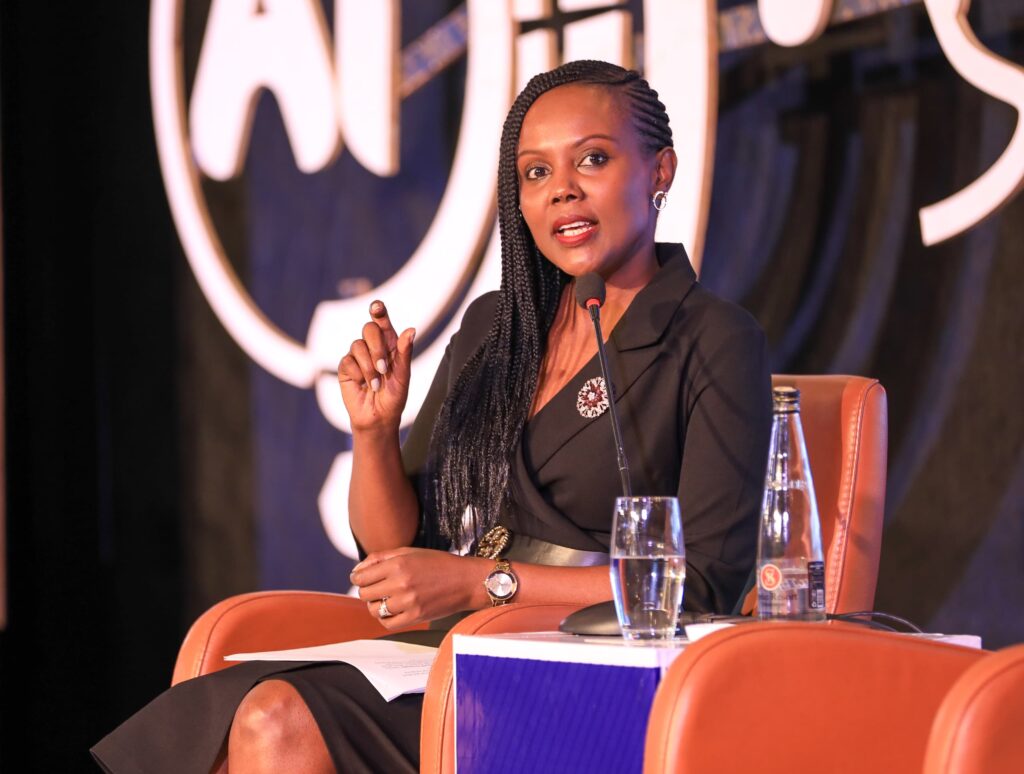
I started in the back end. I’ve been a database administrator, I’ve done networking, I’ve done reports at the service desk, and I’ve done IT procurement. Eventually, I rose to the position of Chief Information Officer. My last role before joining Microsoft was as Head of Engineering at Stanbic Bank Kenya. In the Head of Engineering role at Stanbic, I was in charge of: the tech department, cybersecurity, data and analytics, running major projects (Tech and Real Estate), and bank operations.
Joining Microsoft—besides being the leader of the Africa Development Centre—I’m also an Engineering Director. What this means is I continue being involved in technical matters. We are still developing. I’m involved in development, design, and engaging customers on products in Identity management. So, that has been my journey.
Q: What’s your perspective on Africa’s readiness for AI and how we should approach it?
A: From my perspective, even before students start dreaming ahead, there’s already a real opportunity to ensure Africa doesn’t get left behind. It’s not just about the private sector—it’s also about what we’re teaching in universities. There’s a real need to review the curriculum: have we integrated AI into it? And even before we reach the university level, we must focus on vocational and tertiary institutions and nurture a mindset of self-learning.
Thanks to the internet, anyone can learn. YouTube, Coursera, Udemy… they’re all out there. Learning can start with curiosity: How does an aeroplane fly? How can AI help agriculture? The opportunities are endless. At Microsoft, we’ve provided tools like Microsoft Learn and the AI Skills Navigator—you don’t need to be in tech to use them. They’re tailored for beginners, intermediates, and experts. Once you know what problem you want to solve, you can see how AI fits in your vertical—and that’s where the real magic happens.
Q: What does AI mean for productivity in traditional sectors like education or healthcare?
A: Let me make it real with a personal story. My mother is a retired teacher. When I was younger, I saw her struggle marking piles of exam papers—different handwriting, endless fatigue. Today, tools are being developed that can assess handwriting, mark papers, and improve productivity. The same applies across sectors: healthcare, agriculture and retail.
We need to move away from fearing AI will take jobs. At Microsoft, we use the term co-pilot—it’s not here to replace you, it’s here to augment. Think back to when we first got smartphones. We were curious and excited. We found new ways to use them. AI is the same. It’s a general-purpose technology. Those who are curious and willing to learn will benefit most.
Q: Many still fear that AI will cause job losses. How do you address that concern?
A: It’s human to fear change. But remember when email disrupted postal services? Some jobs faded, yes. But others emerged—e-commerce and delivery logistics. It’s about pivoting. If you run a business, ask yourself: Do I have a mobile phone or laptop with internet? Am I using tools like Instagram to boost my business visibility? That’s AI already at work. You don’t need to learn deep data science. Use tools like Bing and Copilot—talk to it. Ask: “How do I grow my poultry farm in Kampala?” It will guide you with inputs, market size, and weather patterns. That’s practical AI.
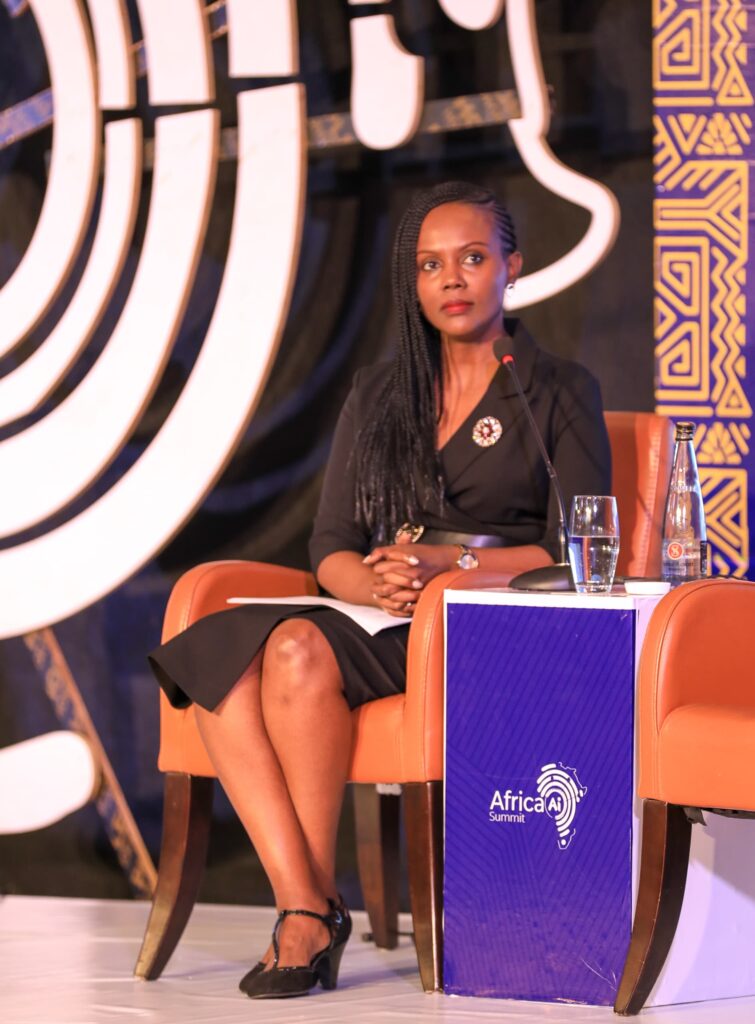
Q: How is AI helping businesses beyond productivity, like in ideation or planning?
A: Great question. AI isn’t just about doing more—it’s about doing smarter. Let’s say you have a business idea—maybe poultry farming. Through the right prompt, tools like Co-pilot help refine it. They can guide you through feeding schedules, market demand, pricing, and even distribution. It’s like having a consultant on demand. AI helps validate ideas and provides context-specific data. It can help turn “just an idea” into a viable business proposal.
Q: Can you share real-life examples of AI use in African markets?
A: Absolutely. In Rwanda, a startup called Babyl uses AI to triage patients. Nurses input symptoms, and the system flags urgent cases. Out of 100 patients, it might identify 5 that need a doctor immediately, saving time and lives.
In Kenya, at Microsoft Research Lab Africa, the team developed Agri-Advisor, an AI tool that speaks local languages and gives farmers advice on crops. It even understands that one crop might have different names across languages, so it translates advice to the farmer’s dialect. It recommends fertilisers and pesticides, and even gives weather updates. Agriculture is huge in Africa, and tools like these are game-changers.
Q: What is Microsoft doing to grow AI talent across Africa?
A: Our journey began formally in Africa in 2019. Before that, Microsoft sold software—but now, we’re developing tech here. We launched a commitment to skill 1 million individuals in AI across Africa this year. We have offices in Kenya, Nigeria, and South Africa. We partner with universities and governments to shape policies and curricula. For instance, Makerere University in Uganda now offers data science programmes—these efforts support job readiness and talent growth. In Kenya, we have a successful university-private sector partnership with 16 institutions, aligning what students learn with what the job market needs.
Q: What role should governments and universities play in preparing Africa’s workforce?
A: Governments need to work with institutions to craft relevant AI policies. Universities must integrate AI into curricula—not just for coders, but for every discipline. Take Estonia: They introduced problem-solving and critical thinking in primary school, using LEGO! That’s the kind of creative thinking we need here. In Nairobi, we are exploring the most effective way to engage high schools in growing digital skilling.
Q: What about AI and data privacy? How should we approach that?
A: Data protection is crucial. Not just for businesses, but for individuals. AI models must respect privacy, especially for minors. We need to define what counts as personally identifiable data. For example, when taking photos at events, have we asked for consent? Even images of children—how are they stored or used? And then there’s the risk of misuse: deepfakes and voice clones. That’s why we need data governance practitioners—people who educate users and organisations on how to handle data ethically.
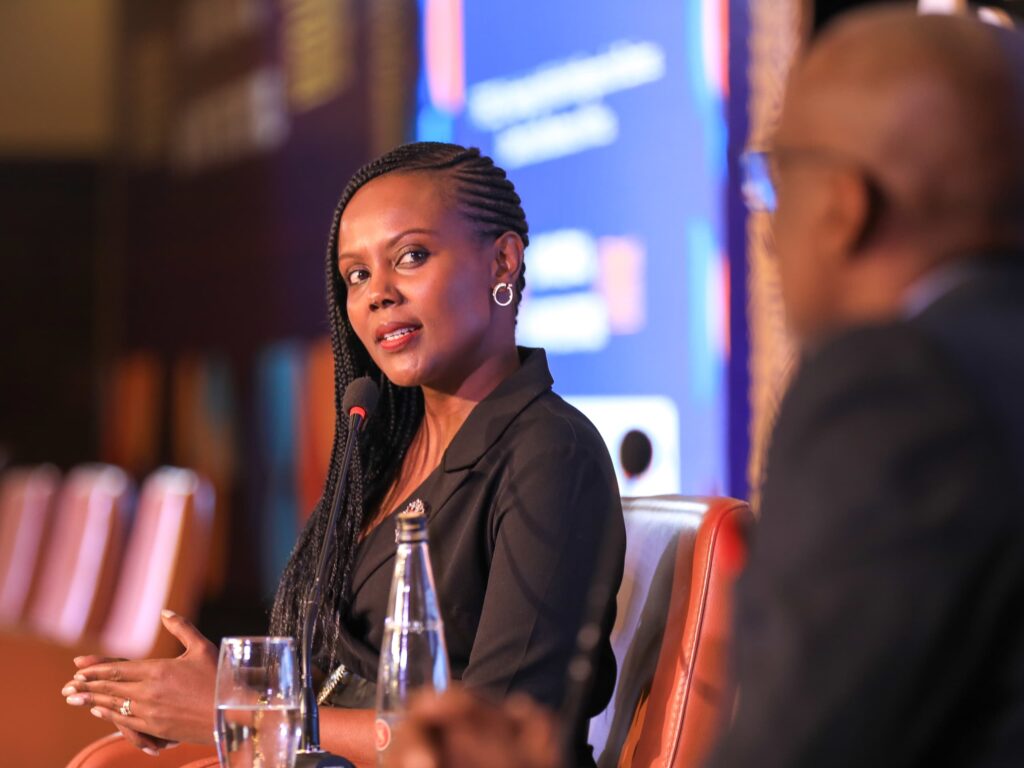
Q: Where does Africa currently stand in terms of AI production and consumption?
A: We are primarily consumers of AI right now—and that’s okay. Consumption builds comfort. But we must transition to producers. Just like social media created new jobs—web designers, and influencers—AI will open new roles. It’s already happening. We just need to be part of the production pipeline. For example, during a collaboration between Microsoft and Google, we discovered that AI models didn’t recognise African housing styles—mud houses, and thatched roofs. The models saw them as “grass” or “land.” That’s why we need Africans building AI—because we understand our context.
Q: How do we ensure AI includes Africa’s diversity, especially our languages and contexts?
A: That’s such a powerful question. One of the biggest risks we face with global AI models is exclusion, especially linguistic and cultural exclusion. For example, many AI models were built using datasets from Western contexts. So, when they encounter African realities, like mud houses or local dialects, they misinterpret them. That’s why I always advocate: we need local data to train local models. Take radio stations that broadcast in local dialects. That’s a rich data source. When we feed those dialects into AI systems, we make them smarter, more inclusive. It ensures someone who doesn’t speak English or French isn’t left behind. This is why we need more African developers, researchers, and contributors shaping the AI space.
Q: How do we manage AI’s impact on customer experience, especially around personalisation?
A: AI has transformed the customer experience in amazing ways. For instance, if you shop online and click on a shoe, the platform might suggest a matching pair of trousers. That’s AI helping you style. It’s good for the customer and great for business. But that same intelligence can become invasive if not handled responsibly. We must teach organisations to collect only what’s necessary—and to respect user privacy, especially when dealing with sensitive groups like children. We’ve seen misuses—like deepfakes and manipulated voices. So yes, AI brings power, but it also brings responsibility. That’s why we need data protection awareness embedded in education, policy, and every organisation’s culture.
Q: What are the infrastructure gaps holding Africa back from fully embracing AI?
A: Let’s be honest—there are still major gaps. We need: Electricity— You can’t code if the power is off; Internet access— AI literacy requires connectivity, and Devices —Many students still lack computers. So, it’s not just about training people—we need to invest in infrastructure. At Microsoft, we’ve partnered with associations like science clubs in high schools in Nairobi to explore how best to roll out AI literacy. But to scale that across thousands of schools across Africa? We’ll need strong government and private sector collaboration.
Q: You mentioned Microsoft’s mission. How is that guiding the Africa strategy?
A: Our global mission is simple: Empower every person and every organisation on the planet to achieve more. In Africa, that means designing inclusive products, partnering with governments, businesses and institutions of higher learning to be part of their digital transformation agenda. With regards to our partnership with universities, our objective is to partner in ensuring that students are job-market ready.
Q: Let’s talk about AI adoption. What would you like AI to do? What is the strategy?”
A: It starts with what is the strategy. What is the pain point? Do you want to increase productivity? Improve customer experience? Improve cost efficiencies? Every business has key parameters that align with shareholders. With the internet, new business models emerged. People gained visibility via websites and social media, enabling scale. Next is data. What data exists, and what’s its quality? This triggers discussions about data governance. Institutions collect a lot of data—are we mindful? Are we collecting too much? Data governance must be considered carefully.
Everything rises and falls on leadership. I advise individuals and corporates to bring this conversation to the leadership layer. Sponsorship is key. Do they have awareness? Fluency? In short: What is your AI strategy? If leadership understands and sponsors this intentionally, the likelihood of adoption significantly increases.
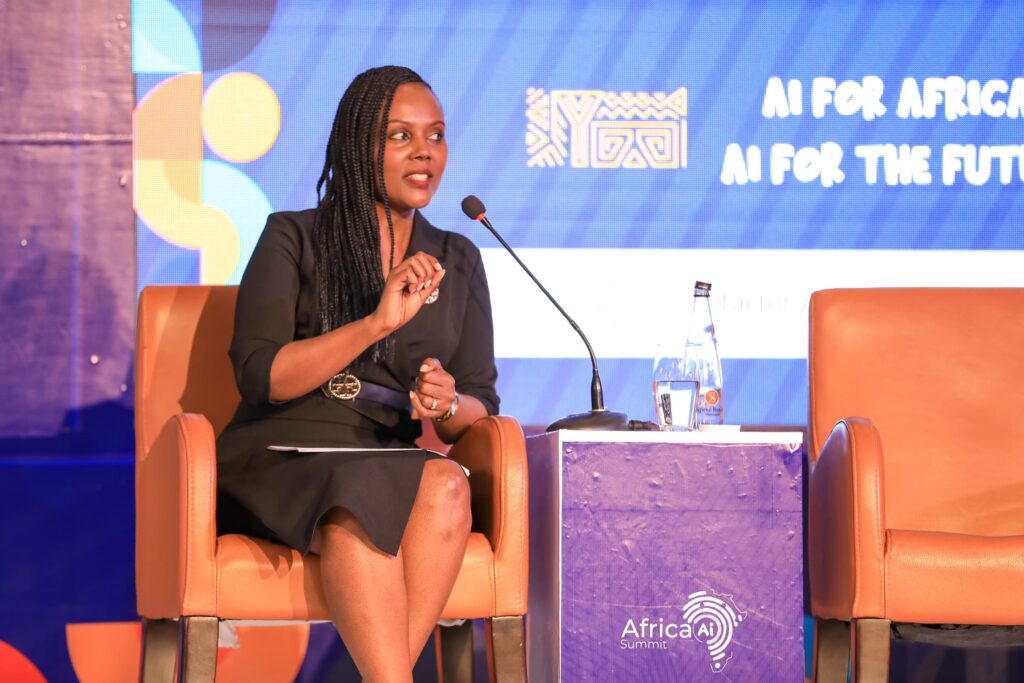
Q: You’re passionate about talent. Is it time to rethink education? Especially alternative models that don’t lead to traditional degrees, like micro-credentials? How do they coexist? Can governments create space for them?
A: At ADC, we have over 550 people, 90% are Kenyan. One story stands out: A man from Kisumu who used to be a fisherman. Using free platforms like YouTube, Coursera, and Udemy, he taught himself software engineering and now works for Microsoft. We must instil a culture of continuous learning. Learning never stops. Governments can enable environments, but we must cultivate growth mindsets ourselves.
49% of students who sit for the Kenyan secondary exams don’t qualify for university. That’s an alarming statistic. We need vocational paths and awareness of microlearning options. Hiring is changing. At Microsoft, we don’t ask for degrees. We assess skills. Many candidates have credentials but lack practical skills. We’re working to embed AI across curricula from bachelor’s to PhD. The goal is true learning, not just credentials. Let’s leverage AI tools to empower lecturers and prevent student drop-offs. Even graduates can enrol for foundational courses—many are free with a school email address. Ultimately, it’s about software—the humankind. The intrinsic drive to learn.
Q: How can non-tech-savvy businesses solve real problems with AI without losing control to tech firms? How can we build AI-powered products without writing code?
A: There are many accessible tools. Check out Microsoft Learn—it offers content for beginners, intermediates, and experts. Also, explore the AI Skills Navigator, which draws from LinkedIn and Microsoft resources, using simple, friendly language. Before we scale AI adoption across the private sector, partnerships are inevitable. Decide what to buy, what to build internally, and what to rent. Like owning a tractor and letting someone else use it when idle via a platform—it’s the same logic in digital.
Q: How is Microsoft engaging in hands-on skill development, like hackathons?
A: We run a programme called Game of Learners, in partnership with universities. It brings together students, tech platforms, and real business problems. For example, we partnered with organisations like PSI (Population Services International). They present problem statements, we provide technology, and students develop solutions. It’s like the Premier League—progressive eliminations over 6–8 weeks. Winners get stipends and internships. Everyone benefits: students, partners, and Microsoft.
Q: Final thoughts—what’s your call to action for Africa?
A: The future is here. We must participate. Even if you’re not tech-savvy, show up with curiosity. Learn. Leverage tools like Microsoft Learn and AI Skills Navigator. Learn how to prompt AI tools for better results. We don’t all need to become engineers, but we must engage. Let’s move from just consuming AI to creating it—local solutions for local problems. That’s how we unlock true digital transformation in Africa.
Q: Any final word from Catherine Muraga?
A: Let’s show up with curiosity. Let’s learn, adapt, and build. We may be early in the AI journey, but Africa is young, digital, and full of promise. Let’s not just consume AI. Let’s create it, shape it, and use it to solve our local challenges. The future is already here. Let’s participate.
